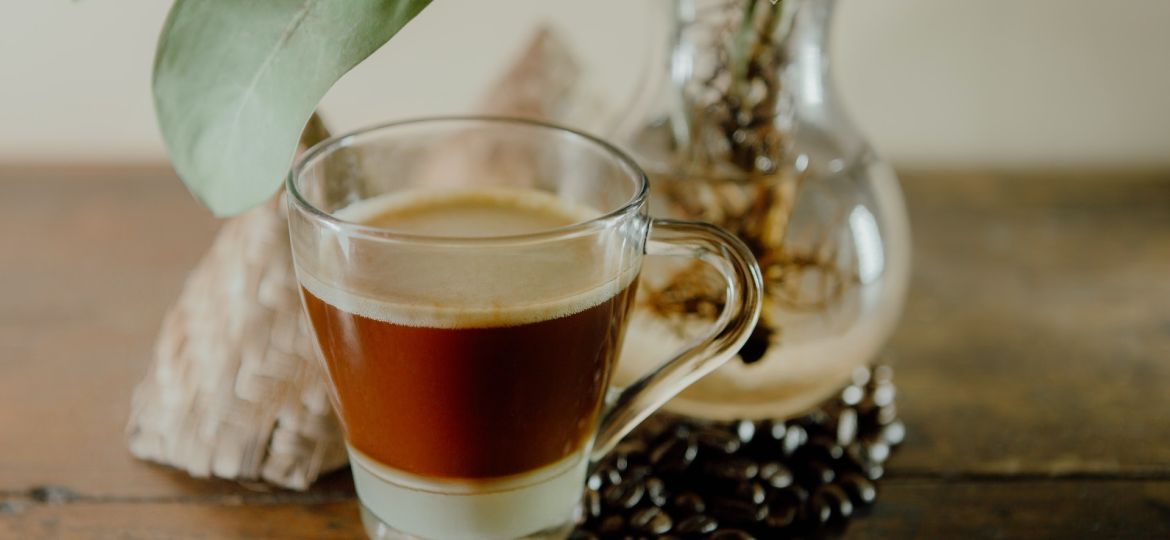
Ever heard of Kopi Luwak? It’s not your average cup of joe. This unique brew comes from Indonesia and has a pretty wild backstory. It’s made from coffee beans that have been eaten and, well, pooped out by a little critter called the Asian palm civet. Sounds bizarre, right? But trust me, it’s a big deal in the coffee world. Let’s dive into what makes this coffee so special.
History and Origin
Kopi Luwak has roots deep in Indonesian history. It all started when the Dutch were running the show in Indonesia. They set up coffee plantations but didn’t let the locals get their hands on any of the coffee beans. The clever Indonesians noticed that the civets were eating the coffee cherries and leaving the beans behind, well, in their droppings. They found that these beans made a pretty amazing coffee. This discovery led to the birth of Kopi Luwak. It’s a story of ingenuity and making the best out of a, let’s say, crappy situation!
The Unique Process of Making Kopi Luwak
Now, let’s talk about how this coffee is actually made. It’s all about the Asian palm civet.
- Role of the Civet: These little creatures are coffee connoisseurs in their own right. They roam the coffee plantations at night, picking and eating the ripest, juiciest coffee cherries.
- Natural Fermentation: Here’s where it gets interesting. As the cherries pass through the civet’s digestive tract, they undergo a natural fermentation process. The civet’s stomach acids and enzymes do some magical work on the beans.
- Changes in the Beans: This process alters the proteins in the coffee beans, which affects the acidity and flavor. It’s like a natural barista doing its thing inside the civet!
- Harvesting: After the civet does its business, the beans are collected (yeah, from the poop), cleaned, and roasted to make this unique coffee.
This whole process might sound a bit out there, but it’s what gives Kopi Luwak its distinct, smooth taste. It’s a combination of the civet’s picky eating habits and the natural fermentation that happens inside its tummy. So, next time you sip on a cup of Kopi Luwak, remember the journey these beans have been on. It’s not just coffee; it’s a story in every cup!
Production and Harvesting
Traditional vs. Modern Methods
When it comes to making Kopi Luwak, there are two main ways: the old-school way and the modern method.
- Traditional Method: This is all about letting nature do its thing. Civets roam free in the coffee plantations, munching on coffee cherries at their leisure. The beans are then collected from the forest floor after our furry friends have, well, processed them. This method is super natural but not very efficient or easy to control.
- Modern Method: With the rise in demand, some folks decided to speed things up. They keep civets in cages and feed them coffee cherries. This method lets producers crank out more Kopi Luwak, but it’s got some serious ethical issues (think unhappy civets and questionable coffee quality).
Geographic Regions of Production
Kopi Luwak is not just an Indonesian thing anymore. While it started there, it’s now produced in a few other spots in Southeast Asia. Let’s check them out:
- Indonesia: The OG of Kopi Luwak. Places like Sumatra, Java, Bali, and Sulawesi are famous for it.
- Philippines: They’ve got their own version, known as Kape Alamid.
- Vietnam: They’re also getting in on the action, producing a similar type of coffee.
Taste and Flavor Profile
Comparison with Other Coffee Types
Kopi Luwak is like the rockstar of the coffee world. It’s got a unique taste that sets it apart from your regular espresso or latte. Here’s the lowdown:
- Smoothness: Kopi Luwak is known for being less bitter and smoother than other coffees. It’s like the silk sheets of the coffee world.
- Complexity: Expect a complex flavor profile. It’s not just coffee; it’s a symphony in your mouth.
Influence of the Civet’s Diet on Flavor
What the civet eats plays a huge role in how your coffee tastes. It’s all about the cherries they choose to munch on.
- Cherry Picking: Civets are picky eaters. They go for the best and ripest coffee cherries. This natural selection means only the top-notch beans make it into Kopi Luwak.
- Diet Diversity: Depending on what else the civet eats (like fruits or other foods found in their habitat), the flavor of the coffee can change. It’s like each civet is a little chef, adding its own secret ingredient to the mix.
Kopi Luwak is not just your average brew. It’s a blend of tradition, geography, and a touch of animal magic.
Ethical and Environmental Concerns
Animal Welfare Issues with Civet Farming
Let’s get real about civet farming. It’s not always a pretty picture.
- Caged Civets: In some farms, civets are kept in small cages and fed a diet of coffee cherries. It’s like being stuck in a tiny room eating nothing but fast food – not cool for the civets.
- Stress and Health Problems: These conditions can lead to stress and health issues for the civets. Imagine being cooped up all day; it’s no way to live.
Impact on Civet Populations and Biodiversity
Kopi Luwak’s popularity has some unintended consequences for our furry friends and their homes.
- Threat to Wild Civets: The demand for Kopi Luwak can lead to civets being captured from the wild. This isn’t just bad for the civets; it messes with the ecosystem.
- Biodiversity Concerns: Civets play a role in their natural habitat, like spreading seeds and maintaining the balance of species. Messing with civet populations can throw this balance off.
Also learn how to make the delicious Irish Coffee.
Market and Economics
Pricing and Exclusivity
Kopi Luwak is like the Louis Vuitton of coffee – exclusive and pricey.
- High Price Tag: This coffee can cost you a pretty penny, sometimes hundreds of dollars per pound. It’s all about the unique process and rarity.
- Why So Expensive?: The cost comes from the labor-intensive process of collecting the beans and, of course, the whole civet involvement.
Global Market and Consumer Demographics
Who’s buying this fancy coffee, and where’s it going?
- A Global Delicacy: Kopi Luwak has fans all over the world. It’s a luxury item, often bought as a gift or a special treat.
- Consumer Profile:The typical Kopi Luwak drinker is someone who loves unique experiences and doesn’t mind splurging on them. They’re often well-traveled, adventurous in their tastes, and keen on trying exotic delicacies.
- Market Hotspots: While it’s popular globally, the biggest markets are in Asia and the United States. In Asia, it’s often seen as a status symbol, while Western consumers are drawn to its unique story and rarity.
- Trend Influence: The rise of specialty coffee culture has also boosted Kopi Luwak’s appeal. Coffee enthusiasts and connoisseurs are always on the lookout for rare and unusual brews, and Kopi Luwak fits the bill perfectly.
Authenticity and Quality Assurance
Challenges in Verifying Authenticity
Kopi Luwak’s popularity has led to a bit of a problem: fakes everywhere.
- Hard to Tell the Real Deal: It’s tough to know if what you’re getting is genuine Kopi Luwak or just regular coffee beans dressed up in a fancy label.
- Why It’s Tricky: The beans themselves don’t look much different after they’ve been through a civet. So, unless you’re watching the civet do its thing, it’s hard to be sure.
Efforts to Prevent Fraud and Imitation
But don’t worry, there are coffee detectives on the case.
- Certification and Traceability: Some producers are now using certification systems to verify their coffee’s authenticity. Think of it like a birth certificate for your coffee beans.
- Educating Consumers: There’s also a push to educate coffee lovers about what real Kopi Luwak should taste and look like, so they can make informed choices.
Cultural and Social Aspects
Kopi Luwak in Popular Culture and Media
Kopi Luwak has become a bit of a celebrity in the coffee world.
- Movie Fame: Remember that scene in “The Bucket List” where Jack Nicholson’s character finds out what Kopi Luwak is? Classic!
- A Symbol of Luxury: It’s often portrayed as this ultra-luxurious item, a must-try for the rich and adventurous.
Social Perceptions and Trends
- Status Symbol: In some circles, sipping on Kopi Luwak is a way to show you’ve got a taste for the finer things in life.
- Ethical Debates: But it’s not all glitz and glamour. The ethical concerns around civet treatment have sparked a lot of debates among coffee enthusiasts.
FAQs
- Is it really made from poop? Yep, it sure is. But don’t worry, it’s thoroughly cleaned.
- Does it taste different? Absolutely. It’s known for its smooth, unique flavor.
Read more about What is a Cortado Coffee and how to make it.
Expert Opinions and Consumer Experiences
- Experts Weigh In: Some coffee experts love it for its uniqueness, while others think it’s more hype than substance.
- What the Fans Say: Those who love it often talk about its smoothness and the story behind each cup.
A casual stroll through the world of Kopi Luwak, covering everything from its authenticity challenges to its place in pop culture and the burning questions people have about this exotic brew. Whether you’re a coffee aficionado or just curious about this unique beverage, Kopi Luwak definitely offers a fascinating blend of taste, tradition, and a touch of the wild. Remember, the world of coffee is vast and varied, and Kopi Luwak is just one of its many intriguing stories.









